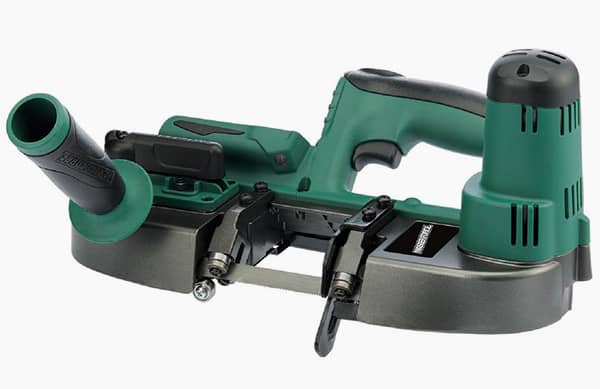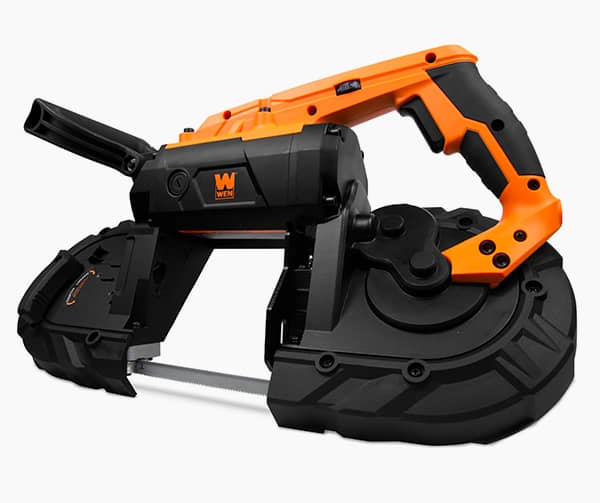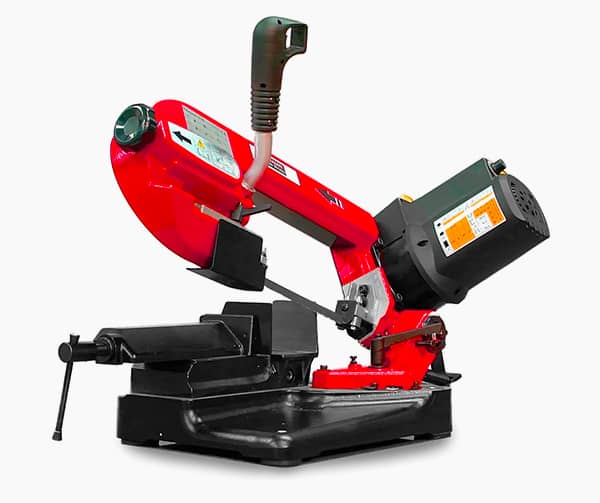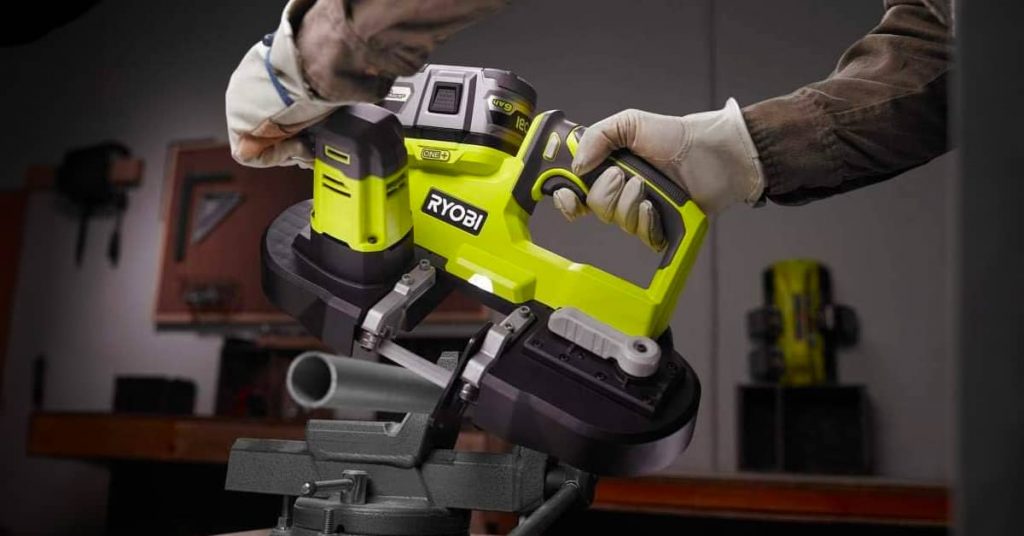Table of Contents
Corded Vs Cordless Portable Band Saws: Which One Should You Choose?
Whether you’re a professional contractor or a dedicated DIYer, a portable band saw is one of the most useful cutting tools you can have in your arsenal. With the ability to make curving, irregular cuts through wood, plastic, or metal, portable band saws provide versatility no circular saw can match.
But this handy tool now comes in two forms: Corded and Cordless Portable band saws. The question now is: which one should you use? Should you go cordless for maximum convenience or corded for sheer power?
All in all, this decision can impact everything from your cutting speed to job site safety. In this article, we will compare their uses, benefits, and key features to note when choosing the right portable band saw for your needs.
What are Cordless Portable Band Saws Used For?
Cordless portable band saws are used for making curved, irregular, or angled cuts in materials where a power source is unavailable. Their cordless functionality allows using them anywhere – indoors or outdoors. Common applications include:
- Cutting construction materials like wood, PVC pipe, or conduit on job sites without electrical access. The saw’s lightweight and quiet operation are ideal for residential projects.
- Fabricating metal parts on-location rather than being limited to the workshop. The portability is great for mobility around large-scale projects.
- Trimming and shaping decorative elements made of wood, acrylics, or other standard workshop materials outside of the workbench area. This supports crafting furniture or sculptures without confining cuts to a stationary saw.
- Pruning trees, shrubbery, and landscaping materials while up on a ladder. Overhead cutting is safer and easier without a power cord dangling down.
What are the Benefits of Using Cordless Band Saws?
Using the cordless band saw comes with a lot of benefits, which include:
Ultimate Portability: Cordless portable band saws can go anywhere without having to find an electrical outlet. They are ideal for outdoor job sites, areas without power access, or moving around a large workspace. The untethered design improves mobility and accessibility.
Continuous Operation: Extra battery packs can be charged and swapped out to allow continuous use without downtime for recharging. This allows working for longer periods of time without having to stop to recharge batteries.
Quieter Operation: Cordless portable band saws typically run more quietly. And this makes them better suited for noise-sensitive areas like hospitals, schools, or residential neighborhoods. The reduced noise is less disruptive.
Safer Operation: The lack of a power cord eliminates tripping hazards and reduces wiring issues or shock risks. Cordless operation is much safer for wet areas or messy job sites.
Easy Storage: With no cord to wrap up, the cordless model can be packed away or transported easier between sites. The compact size takes up less space in a vehicle or storage area.
Lower Maintenance: The Cordless portable band saw have fewer moving parts and electrical components to service or repair over time. As long as the batteries hold up, maintenance is minimal.
User Comfort: The light weight of cordless model reduces fatigue from extended use. The lack of a cord also improves maneuverability and ease of handling the tool.
What are Corded Portable Bandsaws Used For?
Corded portable band saws are the preferred choice when power and unlimited runtime are needed for intensive cutting tasks. Their constant power source enables using them for:
- High volume cutting of wood or metal during fabrication or construction projects. In short, the corded model can operate continuously without battery changes.
- Precise, controlled cuts in detailed woodworking or metal engraving applications where variable speed is important. The consistent power delivery provides accuracy.
- Cutting dense, thick materials like industrial pipe or steel beams that require high torque saws. More amperage means more cutting power.
- All-day use, such as a full work shift on a job site or in a machine shop. With this, avoiding battery changes improves productivity.
- Any application requiring the portable flexibility but heavy-duty performance of a full-size industrial band saw.
What are the benefits of using the Corded Portable Band Saw?
While cordless saws provide untethered convenience, corded portable band saws have benefits, including:
More Power : Corded portable band saws connect directly to wall power, allowing for larger motors and greater cutting power. This makes them preferable for heavy-duty or high-volume cutting tasks.
Unlimited Runtime: Corded model can operate continuously without battery life limitations as long as electricity is available. This make them a good choice for extremely extended use.
Lower Cost: Corded model avoid the added cost of batteries and chargers associated with cordless tools. The simpler design also makes them more affordable to purchase.
Lighter Weight: Without bulky battery packs, corded portable bandsaws weigh less, reducing fatigue from extended use. Their compact size also makes them easier to maneuver.
Wider Availability: Corded portable band saw have been around much longer than cordless, so there are more makes and models available to choose from. More competition means lower prices.
Higher Precision: The constant power delivery of corded model allows more precise, controlled cuts versus the variable speed of draining batteries.
Corded vs. Cordless Portable Band Saw: Key Feature Comparison
Now you know what a corded or cordless portable band saw is alongside benefits of both handy tools. But there are key features to look for when choosing between cordless and corded band saws.
| Feature | Cordless Band Saw | Corded Band Saw |
|---|---|---|
| Cutting Speed and Efficiency | Battery output limits speed; typically operates at a fixed speed | Higher amperage motors provide faster speeds for smoother cuts; steady pace without slowdowns |
| Power Source and Runtime Reliability | Battery life limits continuous runtime; extra packs can extend use but performance drops as batteries drain | Runs as long as electricity is available; enables all-day use without battery concerns; consistent output |
| Portability and Ease of Use | Compact and lightweight; unrestricted mobility and ready to use out of the box | Less portable due to the cord; restricted mobility and requires set up |
| Noise and Vibrations | Runs quieter with less vibrations; preferable in noise or vibration-sensitive areas | Generates more noise and vibrations due to higher power motors |
| Safety | Removes risks associated with power cords; often includes safety features like blade guards and anti-slip grips | Requires extension cords rated for the tool’s power draw; risks of shocks, shorts, and tripping hazards |
Corded vs. Cordless Portable Band Saw: Which Is Better?
There isn’t a single answer to know which is better between a Corded and Cordless Portable Band saw. Truthfully, It’s all about finding the model that best meets your needs. Lets take a look at the best type of portable band saw depending on your specific cutting applications and needs.
| Feature | Cordless Band Saw | Corded Band Saw |
|---|---|---|
| Power Source | Battery-powered | Electricity-powered (outlet required) |
| Convenience | High convenience for outdoor or residential construction sites | Constrained by proximity to power outlets |
| Battery Packs | Models with larger packs for heavy-duty cutting | Not applicable |
| Cutting Power | Sufficient for wood, light metals; may lack power for dense metals | More consistent for heavy-duty cutting of dense metals |
| Speed Control | Some models offer variable speed | Look for high amperage models with variable speed for smooth metal cutting |
| Noise Level | Generally quieter | Can be loud depending on the model |
| Handling | Better handling for detail work in fine woodworking | Less optimal for detail work due to the cord |
| Power Requirement | Lower amperage sufficient for wood; may need higher for metals | High power requirement for smooth performance |
| Maneuverability | High maneuverability, especially in tight spaces | Less maneuverable due to the cord |
| Safety in Tight Spaces | Safer without cords as tripping hazards | Cord presents a potential tripping hazard |
| Overhead Cutting | Ideal for unimpeded overhead cutting | Cord can interfere with overhead cutting |
| Portability | Easily portable for multiple job sites or occasional tasks | Less convenient for frequent changes in work location |
| Cost | Higher initial cost due to batteries and chargers | Lower initial cost but requires power outlets or extension cords |
As seen from the many application of using the portable band saw, either type of portable band saw expands your cutting flexibility beyond stationary workshop tools. So, always evaluate your particular needs and uses to determine whether cordless freedom or corded power is your priority.
#1 Portable Band Saw Blade Dealer
For high quality portable band saws blade from leading brands like MK Morse, Bahco, and Qsaw, visit Portaband today. We offer a selection of both corded and cordless portable band saw blades to suit your cutting needs. Our expertise helps you choose the best portable band saws on the market for maximum safety, capability and value for your projects.










